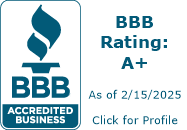
Commercial lending is tightening. How do you get funded in a challenging market?
All of us undoubtedly hear NO! hundreds of times a day especially in the real estate lending world. With the various rules and regulations, it is more difficult than ever to get traditional financing.
According to Kevin Jennings, Southern California market executive for Bank of America Merrill Lynch, “Given all the volatility that has been taking place in the general market as well as in the CMBS market, there is going to be a flight to quality. Lenders have narrowed their focus and are looking to quality assets and quality sponsors.” In a nutshell what this means in layman’s terms is that if a property is not a plain vanilla property with an A borrower the deal is unlikely to get funded. This is further illustrated in a May fed survey that shows bankers continue tightening for business loans with 36.2% saying they tightened their lending standards.
So with more turndowns, what do you do? Here are 5 tips to think outside the box to get your transaction funded.
According to a recent fed survey: “A net 11.6 percent of bankers said they had tightened standards for large and mid-sized firms in the previous quarter, while 5.8 percent said they tightened for smaller businesses. The percentages reporting tightening rose somewhat from the previous report. Net percentages said they had tightened standards on a range of commercial real estate loans, with 36.2 percent saying they tightened on CRE multifamily loans and 24.6 percent tightening on construction or land development loans.”
5 tips to get your transaction funded
With so many transactions falling out of traditional lending it is imperative to have a plan to “think outside the box”. Below are 5 easy steps to take to help you think creatively to get the transaction closed:
- Define your objective: It is critical to understand what your goal is for the transaction. Is it to take out another lender, get a lower rate, longer term, provide working capital. In this step succinctly define the goal and if there are multiple goals prioritize.
- Sanitize your objective: Is your objective realistic and attainable. For example, if your objective is to get a rate of around 4% but your credit is a 480, this is likely not a good goal since it is unattainable.
- Outline variables that you might be able to work with. Brainstorm a list of all assets/ pieces. This is a time to make a laundry list of every possible tool/asset/variable that might be able to be utilized.
- Once all the variables are outlined it is time to list the limitations or pros and cons of each variable. For example, a borrower might own a house with substantial debt on the property (or underwater), this would likely not be a good variable to work with as opposed to if they had another asset with a very low loan to value.
- How can these pieces fit together? Once these variables and the pros and cons are outlined a picture should start emerging of how best to structure a transaction in order to meet the objective defined in number one above. For example, if the borrower needed working capital, it might be easiest to use a home and do a simple home equity line of credit as opposed to refinancing a very low rate commercial loan. Once the pieces are clearly defined now is the time to get creative and figure out the best way to utilize the resources.
Once you go through the steps above you can start looking for associates to help achieve your objectives. Each partner should be selected to help achieve a particular part of the goal stated above. For example, a bank might be able to do an equity line on a house or a private money/hard money lender might be able to help fund a loan quickly with a non owner occupied investment property or commercial property.
At Fairview we are here to help you and your clients achieve your goals. We have over a hundred years of combined experience among the partners to help you fund transactions that might not fit the box. We are an excellent option when loans do not fit traditional lending guidelines for whatever reason since we hold all of our own loans we have the flexibility to “think outside the box” to get the deal done.
Written by Glen Weinberg, COO/ VP Fairview Commercial Lending. Glen has been published as an expert in hard money lending, real estate valuation, financing, and various other real estate topics in the Colorado Real Estate Journal, the CO Biz Magazine, The Denver Post, The Scotsman mortgage broker guide, Mortgage Professional America and various other national publications.
Fairview is a hard money lender specializing in private money loans / non-bank real estate loans in Georgia, Colorado, Illinois, and Florida. They are recognized in the industry as the leader in hard money lending with no upfront fees or any other games. Learn more about Hard Money Lending through our free Hard Money Guide. To get started on a loan all they need is their simple one page application (no upfront fees or other games).
Banks tightening Resources/Links:
- Commercial real estate lending is tightening: Commercial Real Estate Development Association
- Fed Survey: More banks tightening: American Banking Journal
- Tightening by banks continues: Federal reserve bank of St. Louis
- Banks Continued tightening: National Association of Homebuilders
- National association of credit unions eyes tightening: National Association of federal credit unions
